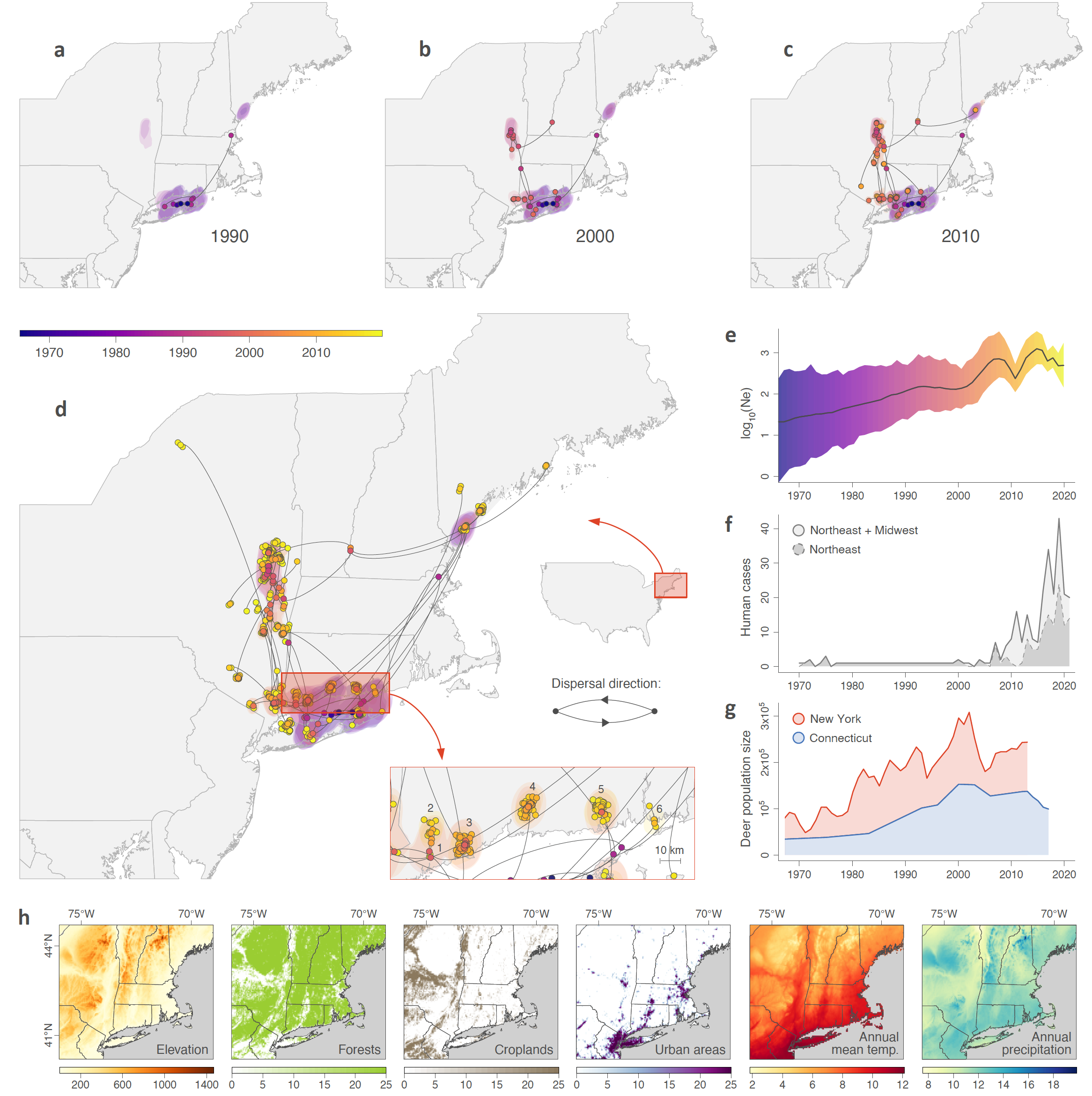A collaboration with the Grubaugh Lab: new study on Powassan virus published in PNAS
Published on April 11, 2023, by Simon Dellicour
Powassan virus is an emerging tick-borne virus of concern for public health, but very little is known about its transmission patterns and ecology. In our recent study performed in collaboration with the Grubaugh Lab just published in PNAS, we expanded the genomic dataset by sequencing 279 Powassan viruses isolated from Ixodes scapularis ticks from the northeastern United States. Our phylogeographic reconstructions revealed that Powassan virus lineage II was likely introduced or emerged from a relict population in the Northeast between 1940-1975. Sequences strongly clustered by sampling location, suggesting a highly focal geographical distribution. Our analyses further indicated that Powassan virus lineage II emerged in the northeastern U.S. mostly following a south to north pattern, with a weighted lineage dispersal velocity of ~3 km/year. Since the emergence in the Northeast, we found an overall increase in the effective population size of Powassan virus lineage II, but with growth stagnating during recent years. The cascading effect of population expansion of white-tailed deer and I. scapularis populations likely facilitated the emergence of Powassan virus in the northeastern U.S. Read the whole study here.
 Figure: spatially-explicit phylogeographic analysis of the dispersal history of Powassan virusOWV in Northeastern USA. (a-d) Reconstruction of the dispersal history of Powassan virusOWV lineages inferred by a spatially-explicit phylogeographic analysis. We mapped branches of the maximum clade credibility (MCC) tree whose nodes, as well as associated 80% highest posterior density (HPD) regions, are colored according to their time of occurrence. (e) skygrid reconstruction of the evolution of the overall effective size of the viral population (Ne). (f) Evolution of the number of confirmed human cases. (g) Estimation of the white-tailed deer (Odocoileus virginianus) populations in the states of New York and Connecticut. (h) Environmental factors included in landscape phylogeographic analyses to test their impact on Powassan virus dispersal.
Figure: spatially-explicit phylogeographic analysis of the dispersal history of Powassan virusOWV in Northeastern USA. (a-d) Reconstruction of the dispersal history of Powassan virusOWV lineages inferred by a spatially-explicit phylogeographic analysis. We mapped branches of the maximum clade credibility (MCC) tree whose nodes, as well as associated 80% highest posterior density (HPD) regions, are colored according to their time of occurrence. (e) skygrid reconstruction of the evolution of the overall effective size of the viral population (Ne). (f) Evolution of the number of confirmed human cases. (g) Estimation of the white-tailed deer (Odocoileus virginianus) populations in the states of New York and Connecticut. (h) Environmental factors included in landscape phylogeographic analyses to test their impact on Powassan virus dispersal.
Reference: Vogels CBF, Brackney DE, Dupuis II AP, Robich RM, Fauver JR, Brito AF, Williams SC, Anderson JF, Lubelczyk CB, Lange RE, Prusinski MA, Kramer LD, Gangloff-Kaufmann JL, Goodman LB, Baele G, Smith RP*, Armstrong PM*, Ciota AT*, Dellicour S*, Grubaugh ND* (2023). Phylogeographic reconstruction of the emergence and spread of Powassan virus in the northeastern United States. Proceedings of the National Academy of Sciences of the USA 120: e2218012120. (*) denotes equal contribution